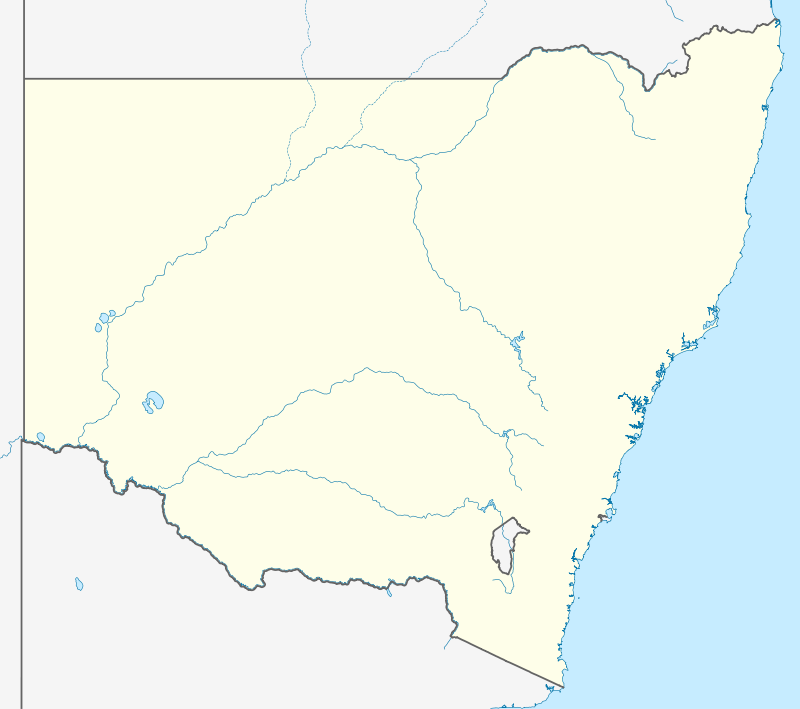Tullibigeal
Tullibigeal is a small farming community in the Central West region of New South Wales, Australia. It has a population of 233 in the 2016 census.
| Tullibigeal New South Wales | |
|---|---|
Cargelligo Street in Tullibigeal | |
 Tullibigeal | |
| Coordinates | 33°25′S 146°43′E |
| Population | 384 (2011 census)[1] |
| Postcode(s) | 2669 |
| Elevation | 296 m (971 ft) |
| Location |
|
| LGA(s) | Lachlan Shire |
| State electorate(s) | Barwon |
| Federal Division(s) | Parkes |
Etymology
The name is an Aboriginal word for "yarran wooden spears",[2] yarran being a native species of acacia.
Demographics
At the 2011 census, Tullibigeal and the surrounding area had a population of 384.[1] In 2006, the population was both older and more homogeneous than the Australian average, with 31.2% of residents over 55 years compared to a national average of 24.3%, and only 3.1% born overseas compared to a national figure of 22.2%. More than 93% of residents spoke English at home.[4]
In religion, Tullibigeal is predominantly Christian with the major religious denominations being Catholic (26.3%), Anglican (23.2%) and Uniting (22.4%). Only 6.4% of the population professed no religion, barely one third of the national average of 18.7%.[4]
Economy
The main industries are sheep and cattle farming and grain cropping,[5] collectively employing 62% of the Tullibigeal workforce.[4] Median income was A$409 per week, significantly below the national average of $466.
Grain transport from Tullibigeal is provided via direct access to the rail line between Lake Cargelligo and Temora, with large grain silos located along the tracks near the town.
Notable residents
The town and surrounding district have produced several notable sports people including Barry Glasgow who played for Western Suburbs and North Sydney in the NSW Rugby League competition in the 1960s and 1970s.[6]
Gallery
- Tullibigeal crossing
- Tullibigeal Silo
- Tullibigeal Silo
References
- Australian Bureau of Statistics (31 October 2012). "Tullibigeal (State Suburb)". 2011 Census QuickStats. Retrieved 7 April 2015.

- "Tullibigeal". Geographical Names Register (GNR) of NSW. Geographical Names Board of New South Wales. Retrieved 4 August 2013.

- Premier Postal History. "Post Office List". Premier Postal Auctions. Retrieved 26 May 2016.
- Australian Bureau of Statistics (25 October 2007). "Tullibigeal (State Suburb)". 2006 Census QuickStats. Retrieved 15 August 2008.
- "Tullibigeal". Western Plains Regional Development Inc. 2005. Retrieved 15 August 2008.
- Mills, Jim; Tony Lewis (2004). "Memories of Mad Mick Alchin". The Era of the Biff. Jeff Quigley. Retrieved 28 March 2009.